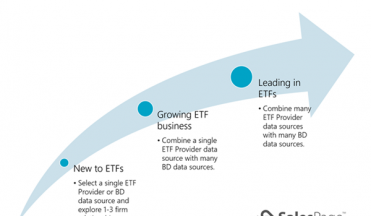Author Archives: Beverly Dube
Filter By
Using BI to identify actionable opportunities
BI professionals from our client community (29 individuals from 16 asset managers) came together for a Roundtable event to discuss how they’re activating data for marketing and distribution. Panelists shared their approaches to evaluating data sources, leveraging analytics tools, and identifying actionable opportunities for their teams. We also sent out a survey after the event with questions about sources and tools and a small but interesting subset of our client community, responded. Here’s what we learned from the event and survey.
ETF data – Right-sizing a strategy for gaining intelligence
Exchange Traded Funds (ETFs) are gaining popularity as passive, low-cost, high-performance investment vehicles. While being traded on the secondary market delivers accessibility to investors, you lose transparency on who owns your products. Data providers supply some clues, but challenges arise when you combine multiple sources to gain visibility. In this article, we unpack ETF data—highlighting the benefits and complexities of each source—and recommend three strategies based on where you are in the ETF market. The most effective strategy will right-size the number of sources balanced against the cost of combining them.